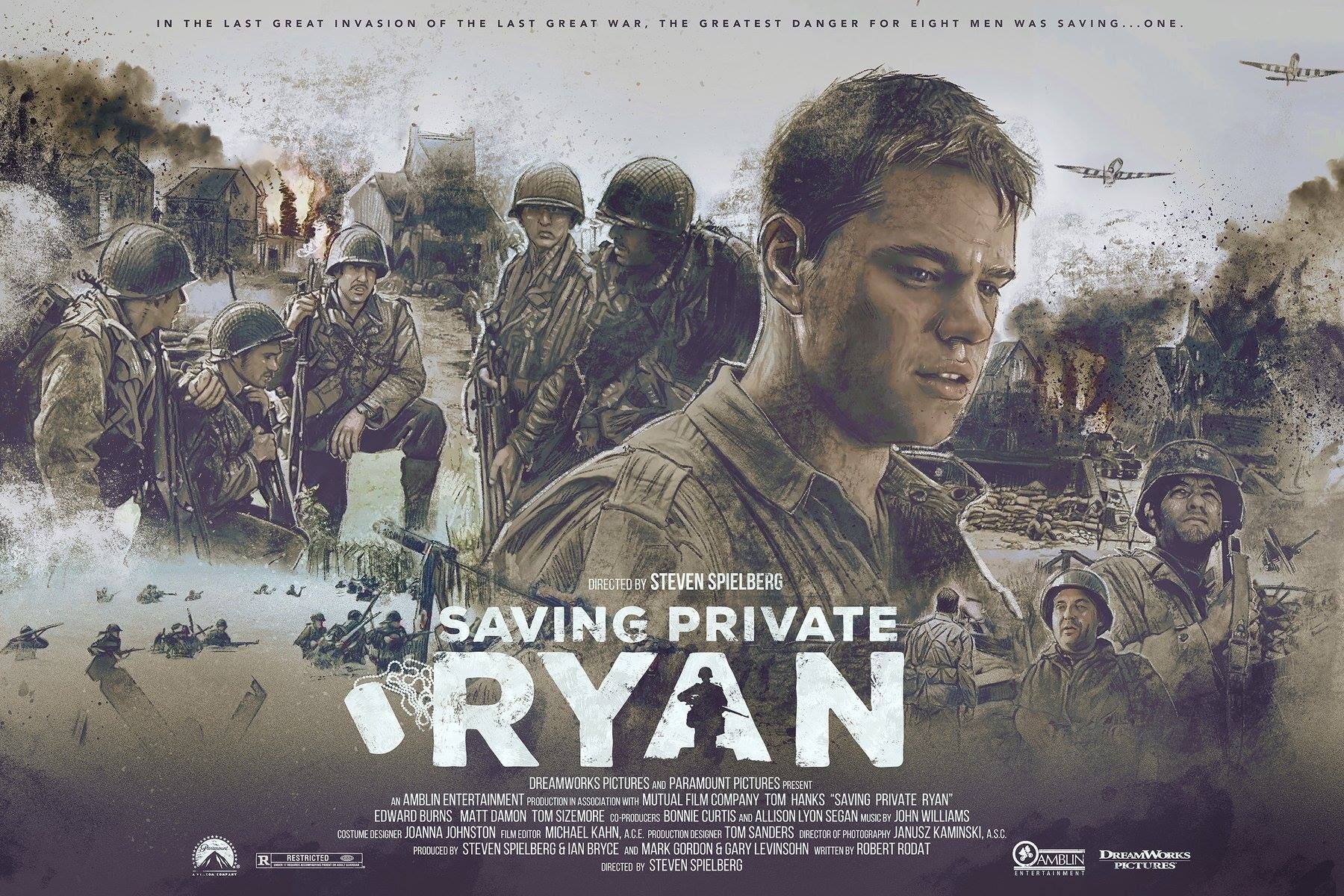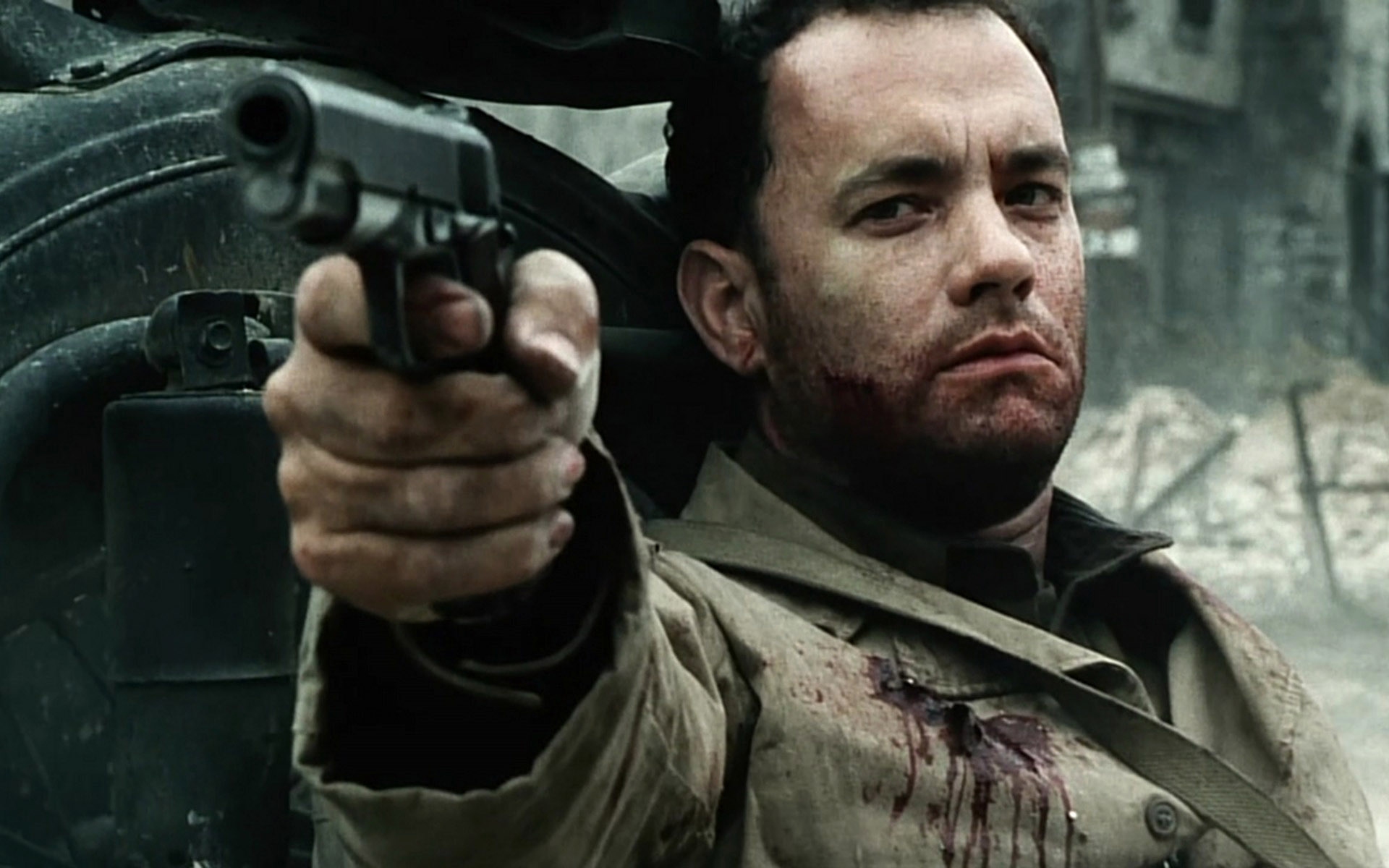Saving Private Ryan 1998

“Saving Private Ryan,” directed by Steven Spielberg and released in 1998, is a landmark war film that has left an indelible mark on cinematic history. Renowned for its intense portrayal of the Normandy landings during World War II and its poignant exploration of duty, honor, and the human cost of war, the film stands as a powerful testament to the courage and sacrifices made by soldiers.
The narrative of “Saving Private Ryan” unfolds in the immediate aftermath of the D-Day invasion on June 6, 1944. The film opens with a harrowing and visceral depiction of the landing on Omaha Beach, where American troops faced devastating casualties as they stormed the heavily fortified German defenses. Through the eyes of Captain John H. Miller (played by Tom Hanks) and his squad of Army Rangers, the audience is thrust into the chaos and brutality of war, experiencing firsthand the horrors and heroism of combat.

Central to the film’s storyline is the mission to locate and bring home Private James Francis Ryan (played by Matt Damon), a paratrooper whose three brothers have been killed in action. Ordered by General George Marshall to find and return Ryan to his grieving mother, Captain Miller and his men embark on a perilous journey behind enemy lines. As they traverse war-torn France, they confront moral dilemmas, personal demons, and the realities of loss that weigh heavily on each member of the squad.

“Saving Private Ryan” is distinguished by its uncompromising realism and attention to historical detail. The film’s groundbreaking depiction of combat, characterized by its shaky camerawork, immersive sound design, and graphic violence, immerses viewers in the visceral experience of warfare. Spielberg’s direction masterfully captures both the chaos of battle and the quieter moments of camaraderie and reflection among soldiers, creating a profound emotional impact that resonates long after the credits roll.

Thematically, the film explores the ethical complexities of war and the human bonds that transcend duty and nationality. Captain Miller’s unwavering commitment to his mission, despite the personal toll it exacts on him and his men, underscores the themes of sacrifice and selflessness. The moral dilemma posed by the quest to save one man amid the backdrop of countless lives lost raises profound questions about the value of individual lives in the face of collective tragedy.

The ensemble cast delivers powerful performances that breathe life into their characters, each grappling with the harsh realities of war in their own way. Tom Hanks delivers a career-defining portrayal as Captain Miller, embodying the quiet strength and moral integrity of a leader burdened by the weight of command. The supporting cast, including Tom Sizemore, Edward Burns, Barry Pepper, and Vin Diesel, adds depth and humanity to their roles, portraying soldiers who exhibit courage and vulnerability in equal measure.

Visually and thematically, “Saving Private Ryan” pays homage to the sacrifices of those who served and the resilience of the human spirit in times of adversity. The film’s poignant conclusion, set against the backdrop of a military cemetery in Normandy, serves as a haunting reminder of the enduring legacy of war and the profound debt owed to those who gave their lives in service to their country.
In conclusion, “Saving Private Ryan” is more than a war film; it is a powerful meditation on the meaning of heroism, sacrifice, and the bonds that unite soldiers in the face of overwhelming odds. Through its gripping storytelling, visceral imagery, and stellar performances, the film continues to resonate with audiences, offering a timeless tribute to the courage and resilience of those who fought and died in the crucible of World War II.











